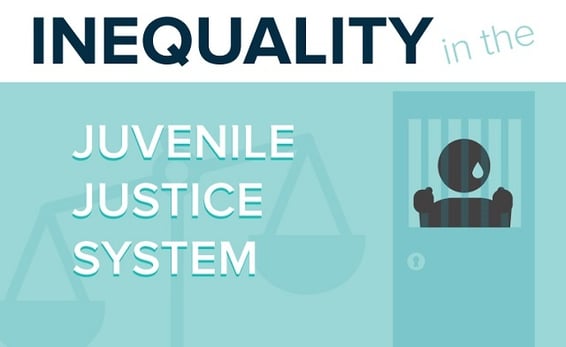Disparities in the juvenile justice system start younger than you'd think, and have a staggering impact
We’d all like to believe that the scales of justice are balanced. But in the case of juvenile justice, the scales are weighted against minority kids.
The facts and figures in this infographic show just how unequal the system is, and some of them might shock you.
Do black kids offend more?
Now, some might argue that black and minority youths commit more crime. That’s up for dispute and depends on whose statistics you check and the types of crime in question. The FBI found the distribution over the total number of criminal offenses charged for youth younger than 18 in 2012 was 65.2 percent white and 32.2 percent black. When it came to driving under the influence, white youths were at 84.6 percent of those charged, blacks only 12.1 percent. That number may have something to do with the fact that white adolescents are more likely to have access to a car. On the other hand, black youths accounted for 55 percent of those charged for robbery, whites 43.3. Sometimes statistics are skewed by something like police presence in a poor, urban neighbor. The research shows that kids in affluent areas are more likely to be disciplined by their parents, kids without as many resources are disciplined by the juvenile-justice system.
What does incarceration cost?
Society’s wallet takes a heavy hit for locking up youths. According to the Justice Policy Institute, we’re talking between $8 and $21 billion a year. President Obama estimated that the total amount for imprisoning adults and juveniles—$80 billion— would
- provide a preschool education for every 3- and 4-year-old in the country
- double the salary of every high-school teacher
- pay for new roads, bridges and airports; job-training programs; research and development
- get rid of tuition at every public college and university
We’ve got to do better for all our kids—black, white, brown, Native American, Intuit. And by doing so, we do better for the entire society, and tip the scales of justice back in balance. One way to do this is to extract young people from the juvenile-justice system. Help them stay in school and become better citizens. Evidenced-based programs like Multisystemic Therapy (MST) do just that.


